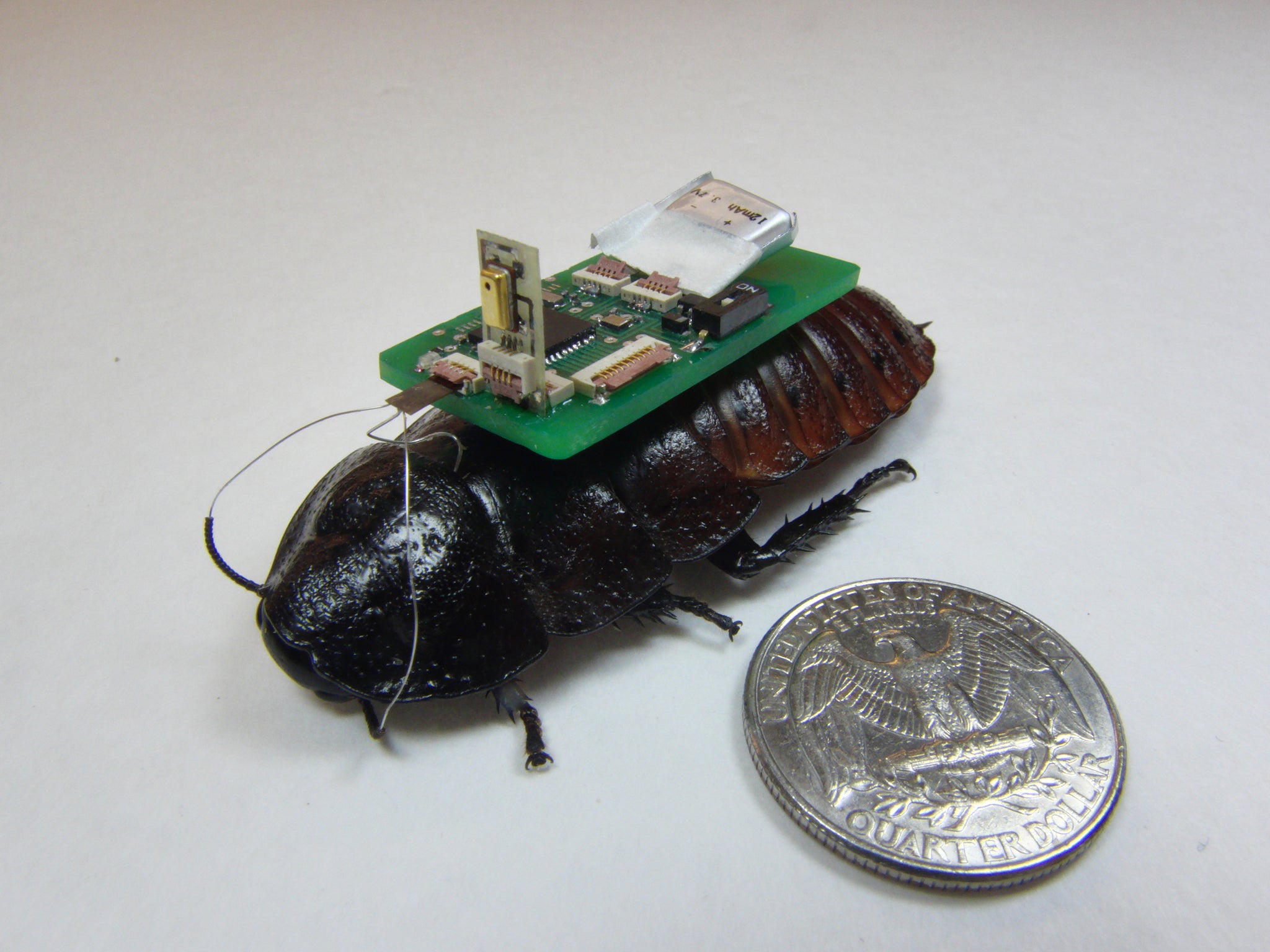Cyborg cockroaches with wireless microphones could help rescue disaster survivors
The insects could be released into rubble to locate trapped survivors

Your support helps us to tell the story
From reproductive rights to climate change to Big Tech, The Independent is on the ground when the story is developing. Whether it's investigating the financials of Elon Musk's pro-Trump PAC or producing our latest documentary, 'The A Word', which shines a light on the American women fighting for reproductive rights, we know how important it is to parse out the facts from the messaging.
At such a critical moment in US history, we need reporters on the ground. Your donation allows us to keep sending journalists to speak to both sides of the story.
The Independent is trusted by Americans across the entire political spectrum. And unlike many other quality news outlets, we choose not to lock Americans out of our reporting and analysis with paywalls. We believe quality journalism should be available to everyone, paid for by those who can afford it.
Your support makes all the difference.It’s well known that cockroaches are some of the hardiest creatures on Earth, able to remain active for a month without food and capable of withstanding as much as 15 times the amount of radiation than would kill a human.
With all these survival skills then it makes sense that roaches might also help with disaster relief. At least, this seems to be thinking behind a group of US researchers who have created cyborg cockroaches that can crawl through rubble to locate survivors.
The scuttling invertebrates are kitted out with electronic ‘backpacks’ comprised of a microphone and wireless transmitter. An invisible ‘fence’ is then used to mark out a search area and the cockroaches are released, free to roam and locate trapped individuals.
“In a collapsed building, sound is the best way to find survivors,” said Dr Alper Bozkurt, assistant professor of electrical and computer engineering at North Carolina State University.
"The goal is to use the biobots with high-resolution microphones to differentiate between sounds that matter—like people calling for help—from sounds that don't matter—like a leaking pipe. Once we’ve identified sounds that matter, we can use the biobots equipped with microphone arrays to zero in on where those sounds are coming from.”
Dr Bozkurt and his team even created a way to steer individual cockroaches using the same invisible fence technology - an essential component to the biobot mission as the cockroaches will need to be periodically steered into sunlight to recharge the solar batteries on their microphones.
While a cockroach wired for sound might not be as attractive a rescue animal as St Bernard with a brandy barrel, the little insects could be infinitely more practical – reaching into tight spots that no other animals (or robots) could reach.
Join our commenting forum
Join thought-provoking conversations, follow other Independent readers and see their replies
Comments